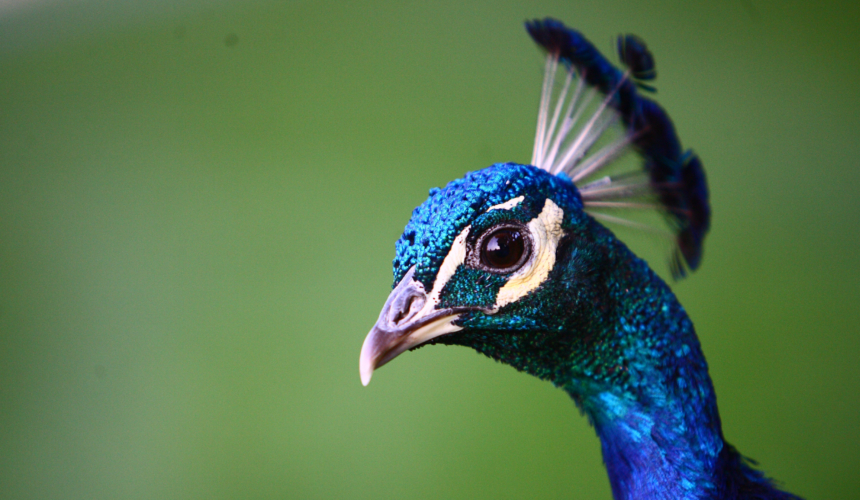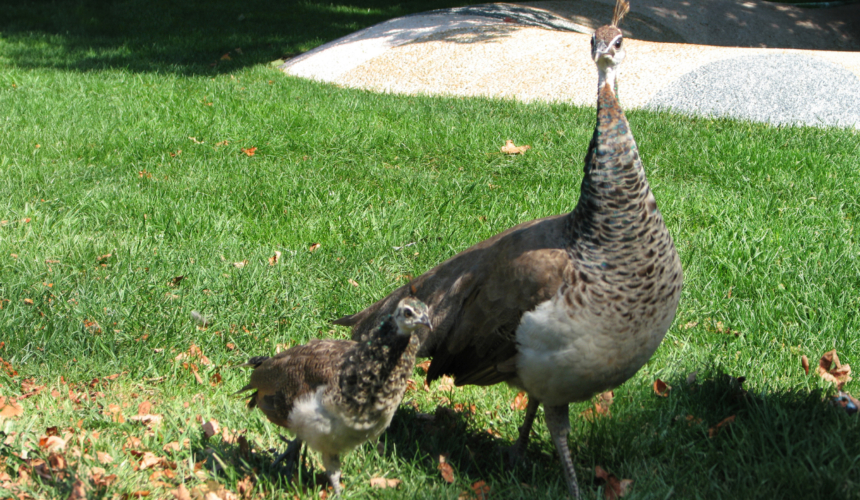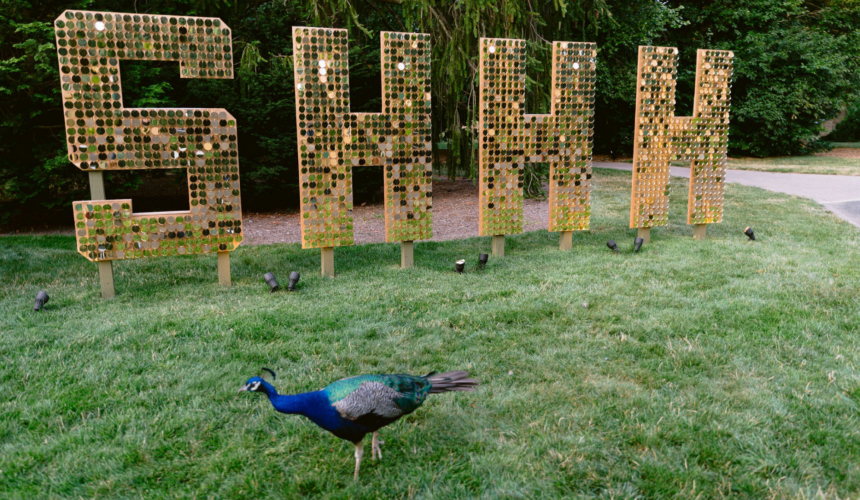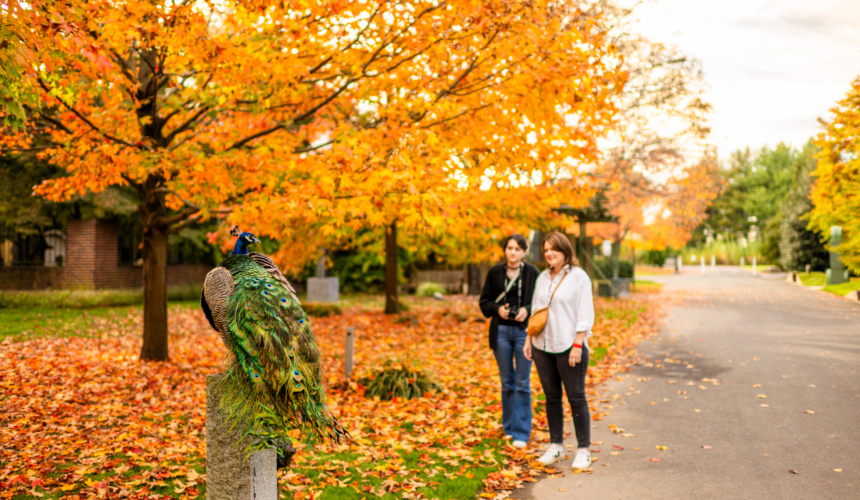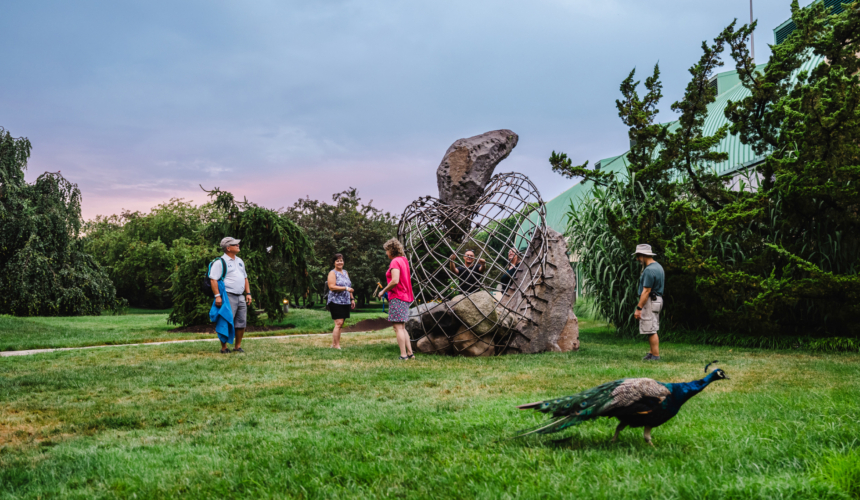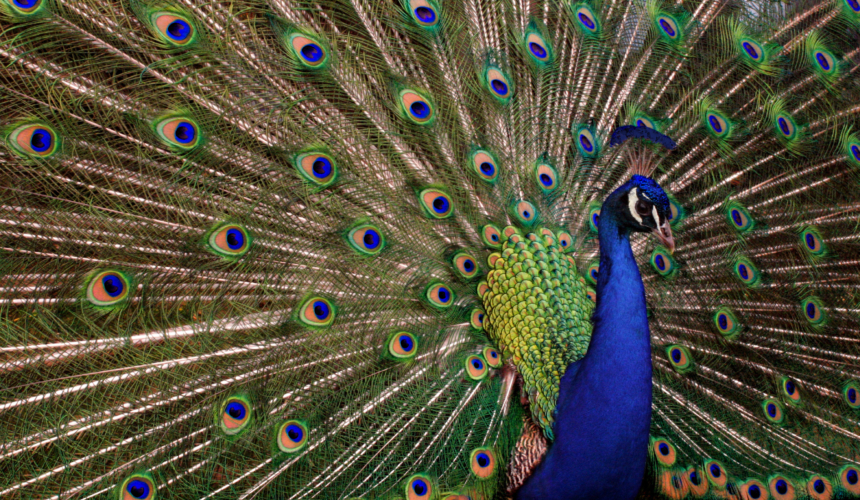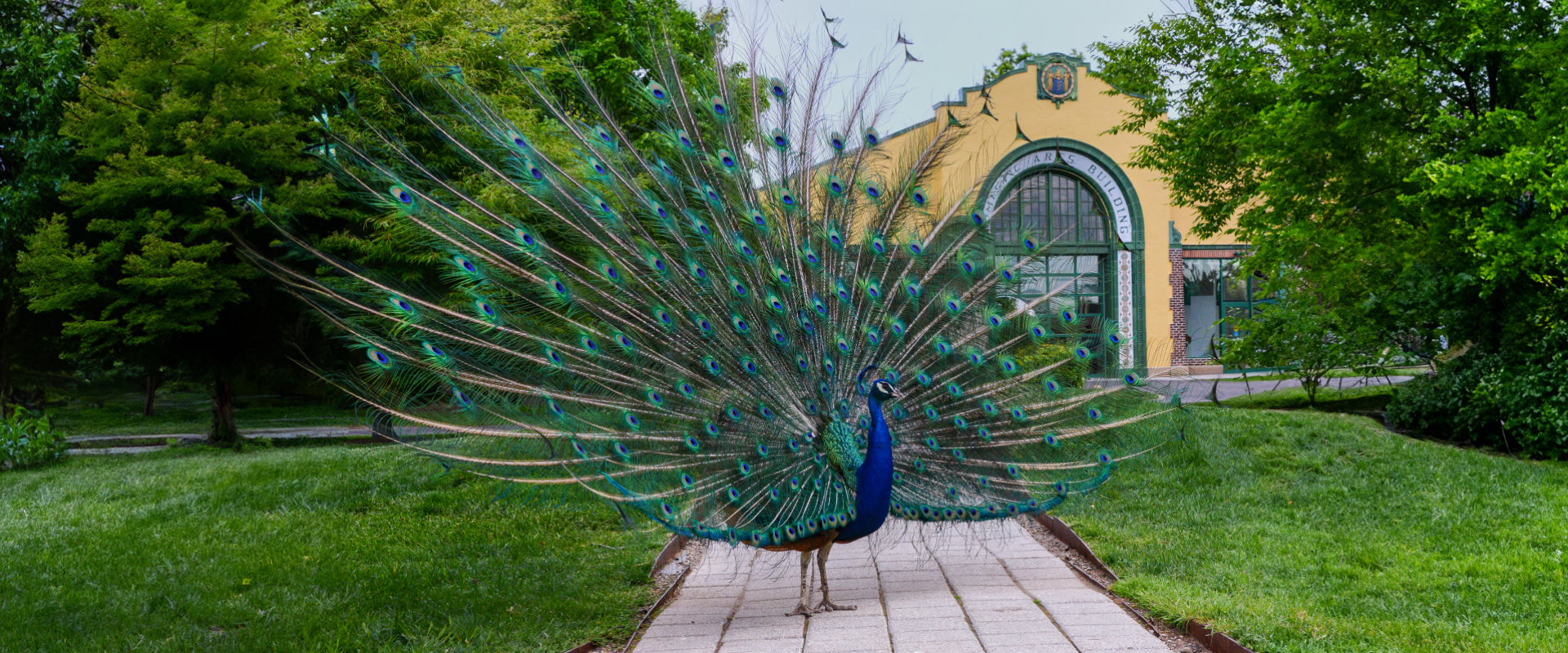The history of these extraordinary creatures at Grounds For Sculpture begins June 29, 1998, when Project Director, Bruce Daniels, purchased the first peafowl from Pennsbury Manor in nearby Bucks County, PA, under direction from founder Seward Johnson who called Daniels one day to say, “We should have some peacocks roaming around the grounds.” GFS’ Facility and Grounds Team feed the birds daily, but peafowl are also opportunistic omnivores who happily forage for insects, seeds, grasses, fruits, and even small rodents and reptiles. Typically, GFS is home to 6-12 peafowl. They have enclosed perches on the grounds and a peacock house adjacent to the Warming Hut, but more often our group of peacocks (known as an ostentation) can be found roaming the grounds year-round.
The peahens can be identified by their subdued colors that provide more effective camouflage than showy plumage of their male counterparts. Writer Flannery O’Connor, who kept peafowl and wrote about them in her work, noted that “The peabiddy is the color of those large objectionable moths that flutter about light bulbs on summer nights.” Anyone who has visited the grounds in April has undoubtedly heard the shrill mating call of one of our resident males. Generally, the peafowl are laid-back inhabitants that can be found strutting across the grounds, however, in early spring their mating ritual is in full display. The males unfurl their captivating tail feathers, shaking and fanning them, hoping to woo the females. This ritual typically tires itself out by May and is followed by a cycle of molting in July and August when the tail feathers of the male peacocks can be found littering the grounds. They will regrow new tail feathers over the course of many months. Interestingly, the eyespots that adorn a peacock’s tail feathers aren’t just for show. These striking patterns are thought to also serve as a defense mechanism, intimidating potential predators by mimicking the eyes of a larger animal.
